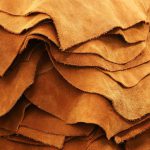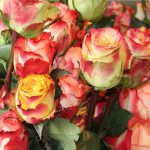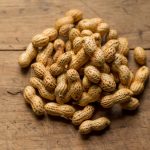
Introduction
- “Fodder” refers to food given to animals rather than that which they forage for themselves. This includes hay, straw, silage, compressed and pelleted feeds, oils and mixed rations, grains and legumes. “Forage” traditionally meant plant material eaten by grazing livestock – pasture, crop residue, immature cereal crops – but is used more loosely these days to include what was previously indicated by “fodder”.
- Crop residues are an important source of winter forage.
- In the drier central and western areas of the country, farmers commonly have small areas of drought tolerant fodder crops to provide a fodder reserve for droughts.
- The establishment and management of cultivated pastures is a highly specialised industry. Choice of species or cultivar, preparing the correct seedbed, the time to sow, seeding depth and density as well as fertilisation, are examples of aspects that should be taken into consideration. Grasses are often mixed with other grass species or with legumes like lucerne.
- Cultivated pastures (on dry land) can produce up to four times more than natural veld and play an important role in animal husbandry.
Contents
Local business environment
The Annual Report of the South African National Seed Organisation (SANSOR) includes a forage division chapter. This captures the developments and sales relevant to this sector. Find it at www.sansor.org.
The National Lucerne Trust (NLT) developed a grading system for lucerne hay which makes the trading of hay much more effective between sellers and buyers. Lucerne hay can be traded through the website www.lusern.org by registered members.
Sericea Lespedeza, commonly known as “poor man’s Lucerne” [or “smart man’s lucerne” (Bath) and “prosperity lucerne”(Fair)], is a summer-growing legume that can effectively replace Eragrostis curvula.
Like eragrostis, sericea grows well on old low-fertile and humus-depleted lands. But sericea outperforms eragrostis on shallow soils. Abandoned lands that couldn’t produce satisfactory yields of eragrostis can now be converted into productive sericea pasture.
The reason is simple. Eragrostis needs nitrogen, and to fertilise a grass pasture on shallow soils is a poor investment that carries high risk – if it doesn’t rain, your nitrogen is wasted. Being a legume, sericea doesn’t require any nitrogen. It’s also highly drought-tolerant and will produce a good forage yield on relatively infertile soil with no fertiliser at all.
Source: “Why it’s time to change to sericea”, an article by the late John Fair in Farmer’s Weekly. Find it at www.farmersweekly.co.za. Also find details on the Infopak on Sericea Lespedeza under the websites & publications heading.
For the newcomer
When it comes to choosing the best forage crop to plant, it is important to consider the following factors:
- Is the forage crop suited to the soil and climatic conditions?
- What sort of animal production will the forage crop be used for? For example, will it be used for milk production, fattening of weaners or the maintenance of dry cows, and so on?
- What are the advantages and disadvantages of a particular forage crop, and how do these characteristics fit in with current stock farming practices?
- How versatile is a forage crop and can it be used for more than one purpose?
- Ensure that sufficient forage is planted to supply the required stock needs. It is preferable to work on a conservative forage yield and to make provision for a surplus.
- Where intensive forage crops are planted under irrigation, be sure to plant crops which provide good yields and have a high feed value. Irrigation is expensive and one must look at obtaining optimal forage yields and optimal usage.
- Before establishment, ensure that you know the fertilizer requirements for forage crops, the correct application times and how to correct any soil nutrient deficiencies.
- Where possible plant more than one forage crop, especially perennial grasses, in order to spread risk and to create a better fodder flow programme. Well-matched grass or legume mixtures can play an important role in this regard.
- Plant forage crops to complement sources of natural grazing and field crop remains and to gain the best advantage from all these sources of animal feed.
- Use of intensive pastures, particularly those under irrigation, can result in internal parasite and fungal disease problems in stock. An effective dosing programme should be followed and, in the case of sheep and dairy cows, preventative measures must be taken for foot rot.
Source: Forage Crop Production Guide by Pannar Seed (Pty) Ltd. This highly useful document can be found on www.pannar.com or at http://www.flipbookcafe.com/books/pannarseed/forage-crops-eng/
Find the grower notes on lucerne at www.lusern.org, website of the National Lucerne Trust (NLT). The NLT writes: “For emerging farmers, it is relatively easy to enter the lucerne industry and produce their own fodder as well as create a positive cash flow by producing seed and hay. By ensuring that only the best quality lucerne seed and hay is being produced, the industry will be more sufficient and profitable, also for the emerging farmer.”
Find grower notes, videos and other information on Tree Lucerne at https://lucernetreefarm.wordpress.com/tree-info/.
National strategy and government contact
Find details of the National Lucerne Trust under the “Services” option on www.namc.co.za, website of the National Agricultural Marketing Council (NAMC).
Role players
Further reference:
- The Grassland Society of Southern Africa (GSSA) advances rangeland ecology and pasture management in Africa through a dynamic and professional Congress held in July each year, during which current research is presented to a mixed audience of scientists, practitioners and consultants. The Congress includes field trips to practical demonstrations of grassland science in practice, as well as special farmer information days and courses. The GSSA publishes the internationally recognised African Journal of Range and Forage Science, and the popular publication, Grassroots. The website of the Society hosts all back issues of Grassroots as well as a searchable database of literature relevant to all aspects of grassland science. The GSSA intermittently produces information days in collaboration with other organisations on a range of subjects, and has recently unveiled a mentorship programme to provide support to young scientists. The GSSA hosts a members’ expertise database for the public who seek expert advice in different areas.
- The National Lucerne Trust (NLT) is the representative body for the South African lucerne seed and hay industry. Its services include the co-ordination of research projects, the collection and distribution of information, technology transfer, cultivar evaluation and the stabilisation of the industry.
Training and research
- Take a look at the delegate list for the last GSSA congress at www.grassland.org.za. Many of these are from universities, provincial departments of agriculture or institutions involved in research.
- The Provincial Departments of Agriculture, working closely with the Agricultural Colleges, present courses on cultivated pastures, hay and silage making, and conduct research on pasture production, weed control, and animal nutrition. Scientists and extension officers can provide advice on fodder flow management. The Soil laboratory at Cedara can conduct detailed soil analyses and provide advice on optimal fertiliser regimes for a wide range of crops. Find contact details on the “Agricultural education and training” page.
Companies involved
- The agribusinesses like VKB, OVK and Overberg Agri. Find their details on the “Agribusiness” page.
- The Sansor website shows seed companies who supply the following forage & pasture seed: Alfalfa/Lucerne, Babala/Pearl Millet, Cowpea, Clover, Fodder Beet & Radish, Forage Sorghum, Lupin, Oats, Stooling Rye, Sub-tropical Grasses, Triticale, Other Forage Legumes and Other Temperate Grasses
Websites and publications
- Contact the GSSA for the African Journal of Range & Forage Science, or view it at www.tandfonline.com.
- Call 012 842 4017 or email iaeinfo [at] arc.agric.za for the following publications, available from the ARC-Institute for Agricultural Engineering: (i) Small-scale hay farming in South Africa (also available in Afrikaans) (ii) Artificial drying of Lucerne (also available in Afrikaans) (iii) Production of green Lucerne with a dehydrator system (iv) The operation and application of mounted mowers (v) The operation and application of hay rakes and hay tedders (vi) Guidelines for round bale silage (also available in Afrikaans) (vii) Building of permanent trench and bunker silage silos (viii) The operation and application of medium and big square balers (ix) The application and operation of round balers.
- CD Roms from the ARC-PHP (Plant Health and Protection) include: (i) Crop Pests, Vol. 4: Field Crops and Pastures Pastures (ii) Medically Important Spiders And Scorpions Of Southern Africa. Write to booksales [at] arc.agric.za or infopri [at] arc.agric.za.
- Visit www.kejafa.com for the following publications, available from Kejafa Knowledge Works: (i) Diereproduksie vanaf aangeplante weiding in die somersaaigebied L Scheepers (ii) Practical Veld and Pasture Management C Dannhauser & J Jordaan (iii) Weidingshandboek (iv) Guide to Grasses of South Africa Frits van Oudtshoorn (also available in Afrikaans) (v) Management Intensive Grazing J Gerrish (vi) Pasture Profits with Stocker Cattle A Nation (vii) Quality Pasture A Nation (viii) Pasture Handbook (also available in Afrikaans)
- The Pannar Seed (Pty) Ltd website is worth a visit – www.pannar.com. Various cultivars of grain and fodder crops are described (find “Products” and “Technical information”), with details of different cultivars and their advantages. Their range also includes various fodder crops including forage cereals, perennial clover pastures, ryegrass, lucerne and forage sorghum. Download the Pannar Forage Crops Production Guide.
- Find the notes by Precision Irrigation Academy at www.netafim.co.za/crop-knowledge/alfalfa/
- Find the many guidelines and brochures at www.kzndard.gov.za/resource-centre, website of the KwaZulu-Natal Department of Agriculture and Rural Development. This includes Forage cereals for dryland pasture production.
- Gids tot die Volhoubare Produksie van Weiding (Prof Hennie Snyman) and Die wonder van UHDSB (ultra-hoëdruk-strookbeweiding) (André Lund) can be ordered at 021 406 4962 or lbw [at] media24.com.
- The Best practice reference manual for wool sheep farming in South Africa, available in both English and Afrikaans, covers alternative fodder crops along with the other information. Find the document on www.nwga.co.za or www.capewools.co.za. Also on the NWGA website, find grazing and pasture management DVDs (links to Youtube where these can be watched).
- Find the Info-pack Sericea lespedeza (Poor man’s lucerne/Armmanslusern) on http://gadi.agric.za/InfoPacks/infopacks.php. It provides a brief summary of available information on the forage crop Sericea lespedeza.
- Die Kynoch weidingshandleiding. EB Dickinson, GFS Hyam, WAS Beytenbach, Keyser Versfeld. ISBN 0 620 14918 3
- Tropical grasses PJ Skerman, F Riveros. FAO. ISBN 92 5 101128 1.
- Die bestuur van aangeplante weiding in somerreenvaldele Chris Dannhauser. The Distributor, Warmbaths, SA. ISBN 0 620 16389 5.
- Various resources and publications are available from ARC-Animal Production. Contact 012 841 9873 / 28. Included here is Cultivated Pastures for South Africa, a collection of brochures on the following pasture plants: (1) Acroceras macrum Nile grass, Nylgras (English) (2) Anthephora pubescens Borseltjiegras (Afrikaans) (3) Atriplex nummularia Oumansoutbos (Afrikaans) (4) Cenchrus ciliaris Bloubuffelsgras (Afrikaans) (5) Chloris gayana Rhodesgras, Rhodes grass, Nyankomo (Afrikaans) (6) Cynodon species Star grass, couch grass (English) (7) Dactylis glomerata Cocksfoot, Orchard grass (English) (8) Desmodium intortum, Desmodium uncinatum Groenblaar Desmdium, Silwerblaar Desmodium, (Afrikaans) (9) Digitaria eriantha Smutsvinger (Afrikaans) (10) Eragrostis curvula Oulandsgras, Weeping love grass (Afrikaans) (11) Eragrostis tef Teff, Tef, T’ef (English) (12) Festuca arundinacea Tall fescue (English) (13) Leucaena leucocephala Leucaena, koa haole, ipil-ipil, wild tamarind, jumbie bean (English) (14) Lolium multiflorum Italian & Westerwolds ryegrass (English) (15) Lolium perenne Lolium boucheanum x L. perenne Perennial ryegrass Hybrid ryegrass (English) (16) Medicago sativa Lusern, Alfalfa (Afrikaans) (17) Pennisetum clandestinum Kikoejoe (Afrikaans) (18) Pennisetum sp (English) (19) Setaria sphacelata Mannagras (Afrikaans) (20) Sorghum sp (Afrikaans) (21) Trifolium pratense Red clover (English) (22) Trifolium vesiculosum Arrowleaf clover (English) (23) Vicia sp Vetch (English) (24) Vigna unguiculata Cowpea (English)
- Find the “Forage” option at https://wikifarmer.com.
- Find the (Afrikaans) advice given in the Vra Vir Faffa column about growing lucerne.
Some articles:
- Find articles on the Farmer’s Weekly website like “Making lucerne hay while maximising soil health“, “The science of producing good silage“, “Expert tips on producing better silage”, “Producing livestock feed without mechanisation”, “Get the grazing right!” and “Grazing and land value”.
- For our Afrikaans readers, Landbouweekblad articles like “Bestuur so grondsuurheid in aangeplante weidings” and “Weistelsels sleutel tot vleisproduksie” will be of interest. The website is www.landbou.com.
- Truter W, Du Toit L, Smith H & Trytsman G. 2016. Integrated crop and pasture-based livestock production systems. Available at www.researchgate.net/publication/330716823_SA_Graan_Oktober_2016_Drukbeweiding



Share this article








